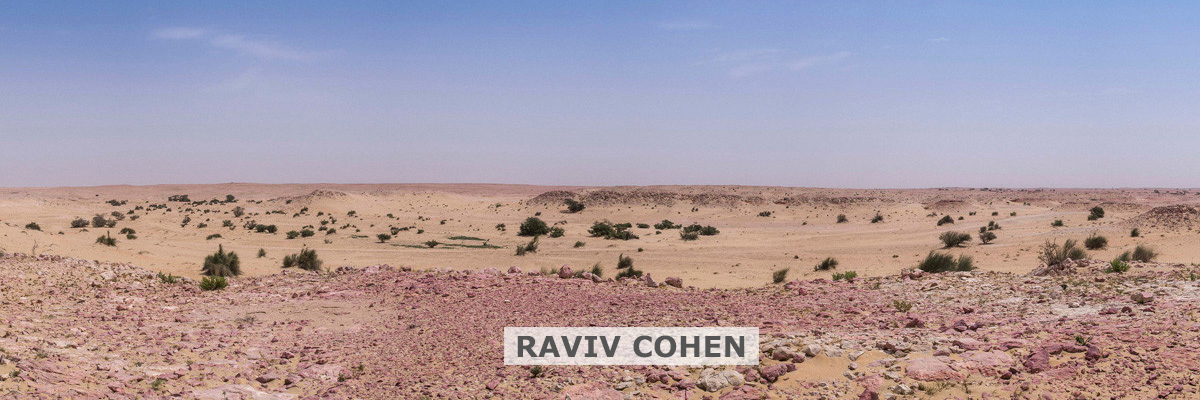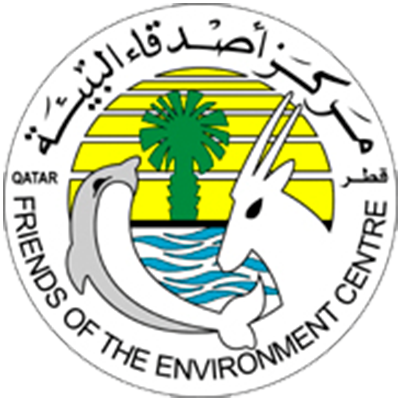
(locally called Hazm or Mistah)
The rocky desert or hamada, locally known as hazm and/or mistah, meaning unfruitful, is the ecosystem most abundantly seen in Qatar. The rocks are formed by weathering of local bedrock, while finer particles may also be transported on site by sand- or rain-storms. Rocky desert is found in undulating higher ground, and usually surrounds rawdat, sand dunes, as well as rocky hills, and boarders with inland and coastal sabkhat.
Even if they seem unhospitable, many desert dwellers make their home in this ecosystem. For example, Spiny-tailed Agamas, dig burrows in the soil among and below rocks, where they reside in times of rest, and to avoid predators and extreme environmental conditions alike. Animals form burrows in the desert floor because there is a significant temperature differential between the surface and just a few centimeters deep into the soil. Furthermore, humidity exuded from the side walls of the burrow, allows animals, especially reptiles, to maintain their skin moistened.
Other behavioral adaptations of desert animals, include limited daily activity, nocturnal lifestyle, and hibernation, while physiological adaptations include water conservation in animals, and spore formation and dormancy in plants and microbes.
The plant community, takes root in areas between rocks where soil is exposed, and is dominated, indicatively, by Ziziphus nummularia, Acacia tortilis and Lycium shawii among annuals of Zygophillum quatarense, Savignya parviflora and Helianthemum lipii. Spiny-tailed Agamas are herbivores, yet in times of limited resource availability in the late summer months, they may scavenge on animal carcasses or eat insects. Spiny-tailed Agamas fall prey to desert co-habitants including the fox, monitor, and even Saluki dogs.
The microbial communities are visible on the surface of the same exposed soil, and often they have a distinct morphology: that of cracked mud. These are called biological soil crusts or biocrusts, and are held together by filaments of photosynthetic cyanobacteria. A considerable diversity of lichen species is displayed resting on the surface of the rocks, exhibiting distinct pigment coloration from off-white and black to pink and orange.
Threats leading to the loss of rocky desert and mortality to its inhabitants, may include construction activities, off-road driving, climate change phenomena and progressive desertification, among others.
© A. D. Chatziefthimiou
Sources:
Whitford W, 2001
Edgell HS, 2006
Batanouny KH, 1981
Norton et al, 2008
Powell JT et al, 2015
Castilla AM et al, 2014
Chatziefthimiou AD et al, 2016
Richer R et al, 2012







